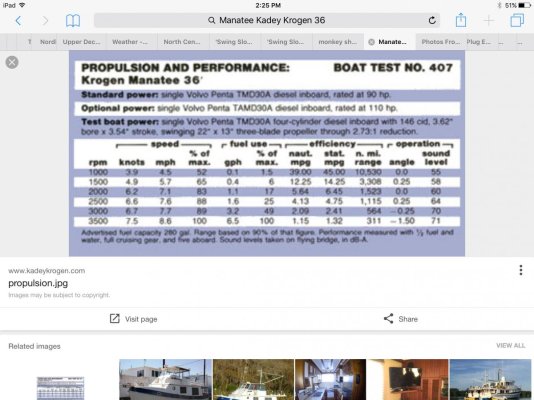There was a guy next to my slip with some kind of a two engine express cruiser. Once in a while he would return on one engine, and he could not turn into his slip without being pulled with dock lines by helpers. I don't think a boat like that will steer well in moderate sea conditions at low speed regardless who or what does the steering. For those small rudders to provide enough transverse thrust, certain speed is needed particularly in confused sea conditions. Have you ever encountered conditions when you had to slow down and have trouble maintaining the course?
Yes, in many twin engine boats -- with high winds in snotty seas and running on one engine -- the AP may have some problem. So would I, if steering manually. Moderate seas, probably no problem. Windage is our more common issue.
But then running on one engine in a twin boat is what I'd consider a special case, and it comes with other issues like transmission lube, shaft lube, etc. so speed usually must be controlled to deal with that other stuff.
Anyway, I'd consider all that just a fact o' physics, not a particular criticism of one style of boat, one brand/model of AP, etc.
OTOH, with both engines running, at any speed, I've never yet encountered a situation where our AP couldn't maintain course. Our "slow" in cases where we're actually trying to go somewhere would usually be in the area of 7-8 kts. When trolling, that's closer to 2-2.5 kts.
Discussing the AP and docking in the same sentence doesn't make much sense to me.
I may or may nor be able to dock on one engine. That partly depends on which engine, and the details about the slip itself. I just had a one-engine episode, actually, but the wrong engine was running to be able to get into our own slip. Had it been our starboard engine running, I could have put the boat into our slip which is on the left side of our fairway, assuming one crew aboard to handle the spring line (which is a pretty normal docking tool for us, anyway).
Given that I was running on the port engine, and single-handing... and given there is a useful usually-empty "bail-out" slip -- straight bow-to entry -- at the end of my own dock anyway, I just put the boat in there, instead. Could have anchored to address the real (engine) problem. Could have landed at the fuel dock or somewhere else conveniently staffed. So I had options. No big deal.
And an AP wouldn't have been a useful tool for any of that docking stuff, anyway.
-Chris


